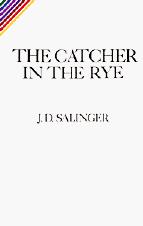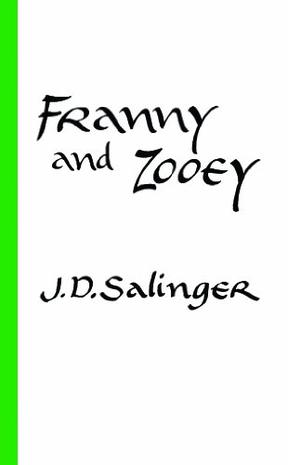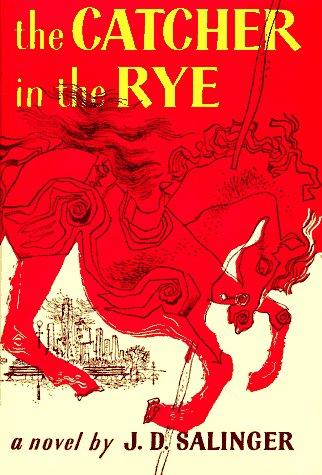欢迎来到相识电子书!
标签:Salinger
-
Franny and Zooey
The author writes: Franny came out in The New YorkerNine Stories
In the J.D. Salinger benchmark "A Perfect Day for Bananafish," Seymour Glass floats his beach mate Sybil on a raft and tells her about these creatures' tragic flaw. Though they seem normal, if one swims into a hole filled with bananas, it will overeat until it's too fat to escape. Meanwhile, Seymour's wife, Muriel, is back at their Florida hotel, assuring her mother not to worry--Seymour hasn't lost control. Mention of a book he sent her from Germany and several references to his psychiatrist lead the reader to believe that World War II has undone him.The war hangs over these wry stories of loss and occasionally unsuppressed rage. Salinger's children are fragile, odd, hypersmart, whereas his grownups (even the materially content) seem beaten down by circumstances--some neurasthenic, others (often female) deeply unsympathetic. The greatest piece in this disturbing book may be "The Laughing Man," which starts out as a man's recollection of the pleasures of storytelling and ends with the intersection between adult need and childish innocence. The narrator remembers how, at nine, he and his fellow Comanches would be picked up each afternoon by the Chief--a Staten Island law student paid to keep them busy. At the end of each day, the Chief winds them down with the saga of a hideously deformed, gentle, world-class criminal. With his stalwart companions, which include "a glib timber wolf" and "a lovable dwarf," the Laughing Man regularly crosses the Paris-China border in order to avoid capture by "the internationally famous detective" Marcel Dufarge and his daughter, "an exquisite girl, though something of a transvestite." The masked hero's luck comes to an end on the same day that things go awry between the Chief and his girlfriend, hardly a coincidence. "A few minutes later, when I stepped out of the Chief's bus, the first thing I chanced to see was a piece of red tissue paper flapping in the wind against the base of a lamppost. It looked like someone's poppy-petal mask. I arrived home with my teeth chattering uncontrollably and was told to go straight to bed."The Catcher in the Rye
Anyone who has read J. D. Salinger's New Yorker stories - particularly A Perfect Day for Bananafish, Uncle Wiggily in Connecticut, The Laughing Man, and For Esme - With Love and Squalor, will not be surprised by the fact that his first novel is full of children. The hero-narrator of The Catcher in the Rye is an ancient child of sixteen, a native New Yorker named Holden Caulfield. Through circumstances that tend to preclude adult, secondhand description, he leaves his prep school in Pennsylvania and goes underground in New York City for three days. The boy himself is at once too simple and too complex for us to make any final comment about him or his story. Perhaps the safest thing we can say about Holden is that he was born in the world not just strongly attracted to beauty but, almost, hopelessly impaled on it. There are many voices in this novel: children's voices, adult voices, underground voices-but Holden's voice is the most eloquent of all. Transcending his own vernacular, yet remaining marvelously faithful to it, he issues a perfectly articulated cry of mixed pain and pleasure. However, like most lovers and clowns and poets of the higher orders, he keeps most of the pain to, and for, himself. The pleasure he gives away, or sets aside, with all his heart. It is there for the reader who can handle it to keep. Salinger's classic coming-of-age story portrays one young man's funny and poignant experiences with life, love, and sex.
热门标签
下载排行榜
- 1 梦的解析:最佳译本
- 2 李鸿章全传
- 3 淡定的智慧
- 4 心理操控术
- 5 哈佛口才课
- 6 俗世奇人
- 7 日瓦戈医生
- 8 笑死你的逻辑学
- 9 历史老师没教过的历史
- 10 1分钟和陌生人成为朋友




